Japan is famed for its delicious food, kimonos, and beautiful temples.
However, it’s also famous for its many weird and wonderful traditions and festivals, some of which seem bizarre to those in the West.
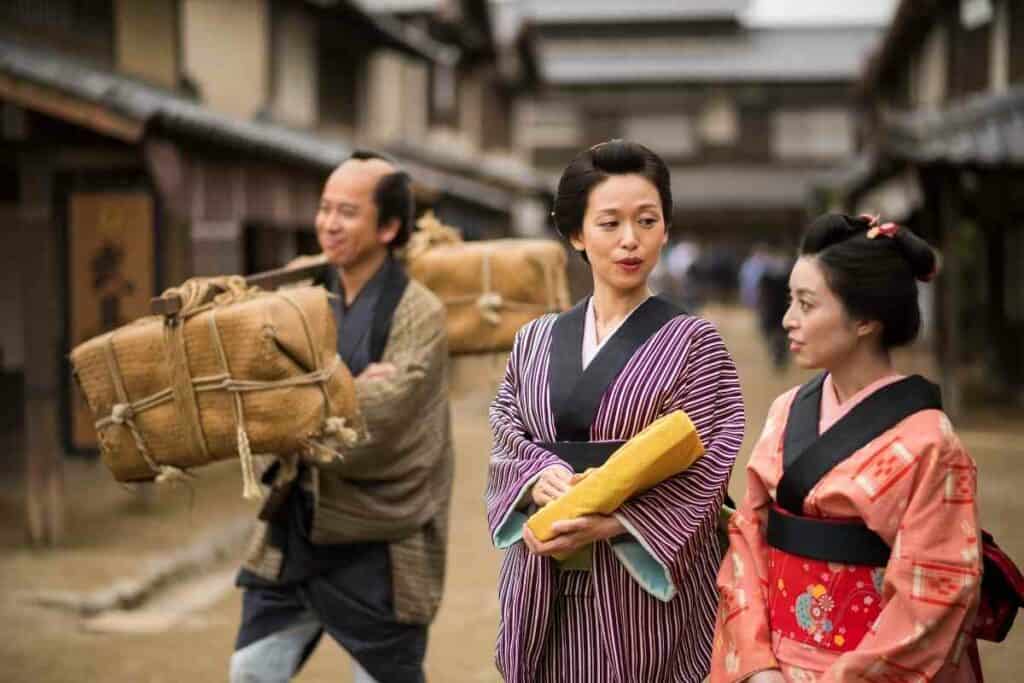
Without further ado, let’s take a look at 25 strange Japanese traditions, starting with some weird festivals.
1. The festival of crying babies – Naki Sumo
Towards the end of April, the Naki Sumo Misturi takes places.
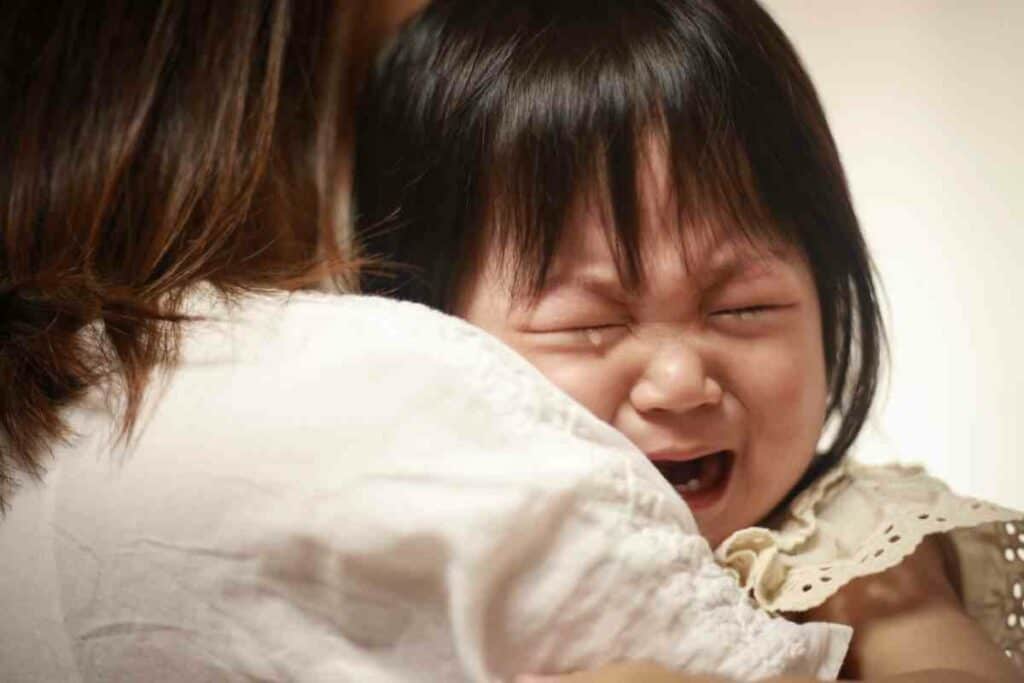
It’s an utterly bizarre festival whereby sumo wrestlers hold up a baby each for a crying competition.
The referee of the competition will wear a scary mask to try and make the babies cry. The baby that cries the longest and loudest wins.
Apparently, this tradition dates back 400 years and is said to maintain a baby’s good health.
The festival usually takes place in Tokyo at the Sensoji Temple.
400 years ols, this festival takes place around May 5th and is aligned with Japan’s Golden Week national holiday so that it coincides with Children’s Day.
Take a quick look
2. The festival of the iron phallus – Kanamara Matsuri
Another April festival, this time on the first Sunday of the month, is the Japanese Festival of the Iron Phallus – or Penis Festival, as it’s more commonly known.
As you would expect, this event celebrates Sex, Fertility and Reproduction: the creation of life. It is also, unsurprisingly, one of few outlets for LGBTQ communities in Japan.
You might have even seen this on the TV as it’s pretty famous.
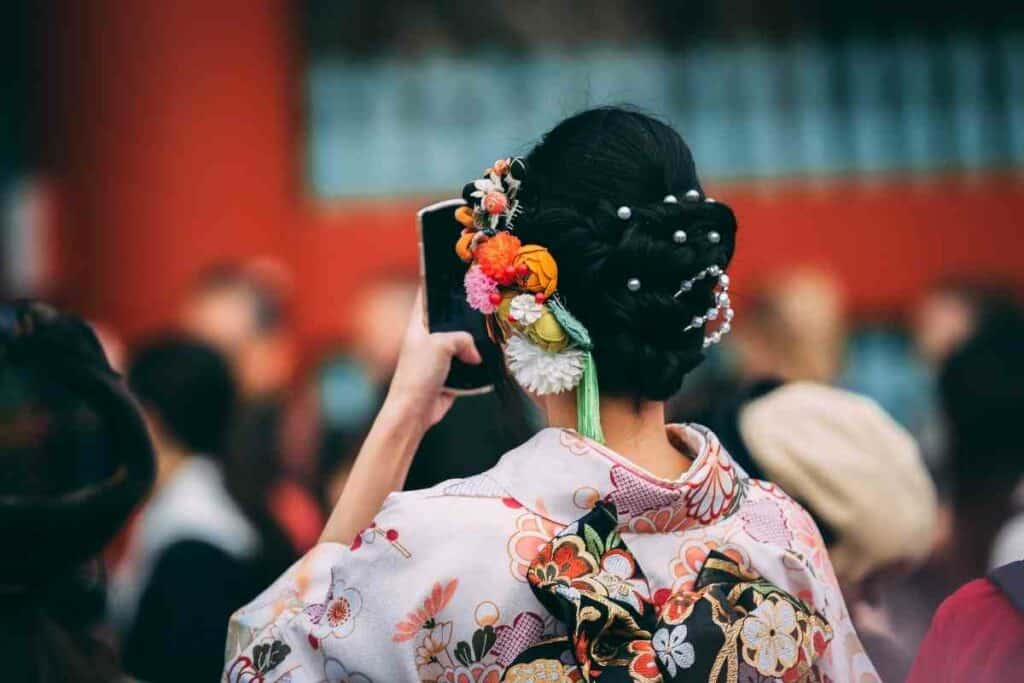
This festival dates back to the 17th century with the idea being to guard people against sexually transmitted diseases. Nowadays, it is a tourist attraction that raises money for research for HIV.
The festival takes place at the Kanayma Shrine.
This is where two gods, the goddess Kanayama-hime and the god Kanayama-hiko are venerated.
These gods are of metalsmithing, blacksmithing, and metalwork.
They’re also the gods that people pray to for protection from STIs and for marital harmony and easy childbirth.
During This Festival – You’ll see phallic puppets, floats, costumes, hats, and even edible items like lollipops.
3. The Belly Button Festival – Hokkai Heso Matsuri
Another strange festival is the Furano belly button festival.
This takes place towards the end of July.
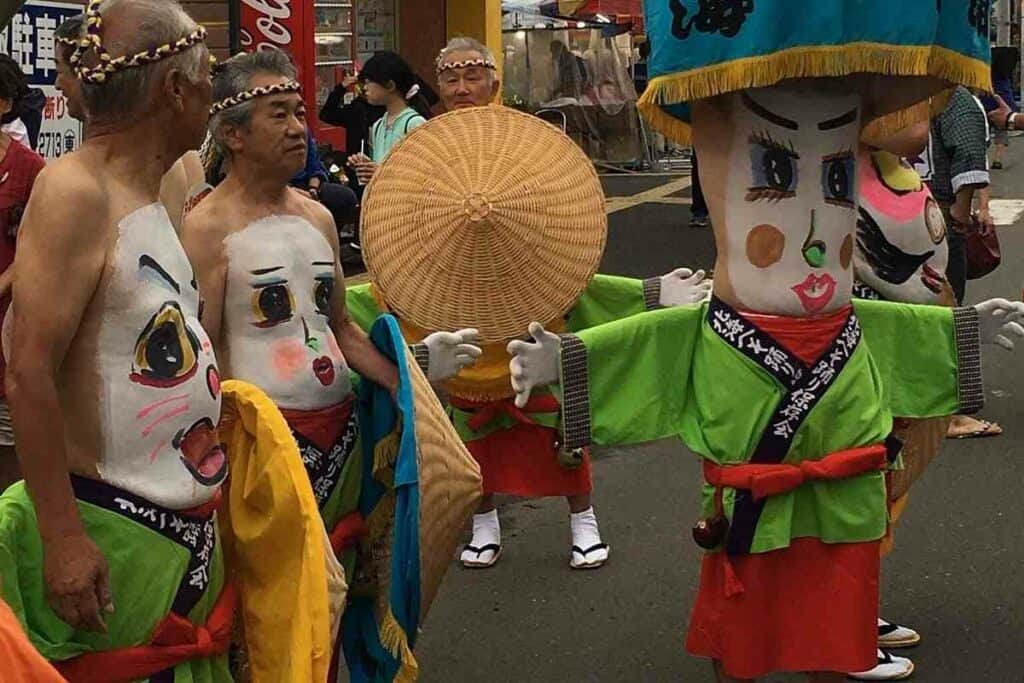
Since the centre of the Hokkaido region is Furano and the center of the body is the belly button, so formed this festival.
During this festival, dancers paint their bodies and use their belly button as the mouth of their character.
They then belly dance along the streets.
4. Setsubun and the throwing of mamemaki beans
The Japanese holiday of Setsubun takes place on the evening before the first day of spring.
The belief is that demons are most likely to appear at this time of year and so parents will don an oni mask to scare kids.
The kids, on the other hand, react by throwing roasted soybeans in order to scare any demons away.
5. Test out coffins, post-mortem makeup and hair at the Shukatsu Festival
While many Westerners shy away from the topic of death and often leave their loved ones wondering what arrangements to make after their passing, the Japanese have a festival dedicated to trying out your funeral before you die!
The Shukatsu festival is all about teaching people how to prepare for death.
There are psychological preparation lessons, you can try coffins for size, and even have makeup samples and hair options discussed.
It’s a pretty good idea, though a little morbid perhaps!
Attracting in excess of five thousand visitors, this festival includes participation from a multitude undertakers, coffin makers, and businesses for the elderly.
They all compete, apparently, to be the leading funeral brand in Japan. However, this festival is not only attended by the old.
The younger festival goer will also try out a coffin or two, and check out the gowns on offer for when they eventually kick the bucket.
This one sometimes takes place in September, but can be arranged for December, at times.
6. Chase away evil spirits at the Paantu festival
This festival has existed for centuries and involves men dressing up as an evil spirit and roaming Miyakojima’s streets to chase people.
These ‘evil spirits’ are covered in foliage and mud. If you’re touched by a paantu, it means you’ll have good fortune.
7. Get naked at Hadaka Matsuri
If a phallic festival wasn’t enough for you, the naked festival of Hadaka Matsuri is the place to go.
Each year, you’ll see around 9,000 men in Okayama take to the streets wearing only a loincloth as they fight for two sticks.
The festival starts when a priest throws these sacred, lucky sticks from a four-meter-high window into the crowd below.
Whoever wins the fight for the sticks and puts them into a wooden box, will receive happiness and good luck for the year to come.
Nine to ten thousand Japanese men descend on Okayama, on February 18th each year, for this packed festival during which everyone wears only a loin cloth (similar to a sumo).
Originating over 1300 years ago, the purpose of this Shinto ritual is to almost compete with everyone else to make contact with the shin-otoko (man of god) at the shrine of Owari Okunitama, in Inazawa.
This is said to transfer all your bad luck to the shrine. Once complete, the bad luck is disposed of in a number of ritual stages.
Participants plunge into freezing water before it begins and parade in the streets following. A truly unique festival which would make even the most unaffected blush a little.
8. Swear to your heart’s content at Akutai Matsuri
If you love throwing expletives and curse words, head to Japan’s Akutai Matsuri, the cursing festival.
During the festival, thirteen priests dress up as mythical demons called Tengus.
As these priests make their way up Mount Atago, people shout (and are encouraged to shout) insults.
What’s more, they try to steal offerings to bring good luck.
It’s a good idea to learn some Japanese expletives before heading to this festival, but if you don’t know any, you can still join in and swear in English!
9. Hinamatsuri – Girls’ Day celebrations (and farts!)
The most bizarre of them all, and one which cannot be ignored, is a festival in March during which people literally attend to smell and hear the farts of beautiful women.
That’s right. Farts.
Participants even include some famous Japanese models and people travel far and wide to carry out this arguably strange activity.
Girls’ Day celebrations are big in Tokyo and there is one fun (and smelly) aspect of these celebrations.
It’s pretty straight forward: if you attend this part of the celebrations, you get to experience what beautiful girls’ farts sound and smell like!
Of course, though, the success of this event depends on whether the girls can produce farts on demand!
10. Chabudai-Gaeshi – tea table flip competition
This even has only been going just over a decade but its popularity is increasing.
For anyone who wants an outlet for their anger, you can take part in a tea table flipping competition and destroy some furniture while shouting about your frustration, anger, hope, or passion!
While table flipping, an older lady dressed as a cook, will pat each contestant’s shoulder when it’s time to start and stop.
Each table will have a plastic fish on top of it and the idea is to send your fish as far as you can.
11. Eating KFC for Christmas
Moving away from festivals, here are some other strange traditions found in Japan.
Firstly, KFC and Christmas!

Though you might like to tuck into your turkey for Christmas, in Japan, they often eat KFC!
This started as a tradition a few decades ago when some people weren’t able to find food for Christmas and so ate at KFC instead.
It’s since become a thing and even KFC have advertized about this!
12. Cuddle cafes – Rent a Cuddle
In Japan, you can pay to use a cuddle café.
In these establishments, you can pay to cuddle someone for a short time or all night!
There are many odd establishments in Japan, from the perspective of an outsider.
None, though, are considered to be quite as creepy as the ‘Rent a Cuddle Café’, where customers can stroke a girl’s hair as part of a relax-based “menu”.
Take a quick nap in your busy day or rent a big pillow for a quick hug.
Keep In Mind – It’s strictly cuddling only and other physical intimacy is not allowed. Prostitution is illegal in Japan.
13. Adopt an adult
In most cultures, adoption is only applicable to children.
However, in Japan, you can adopt people who are in their 20s and 30s as your offspring, which is a pretty sweet concept!
Compared to other countries, Japan has a really high adoption rate.
Most adoptions are in order to get an heir to continue the family line.
For This Reason – Around nine in ten adoptions are male adults.
14. Toilet slippers
Japanese people love their slippers!
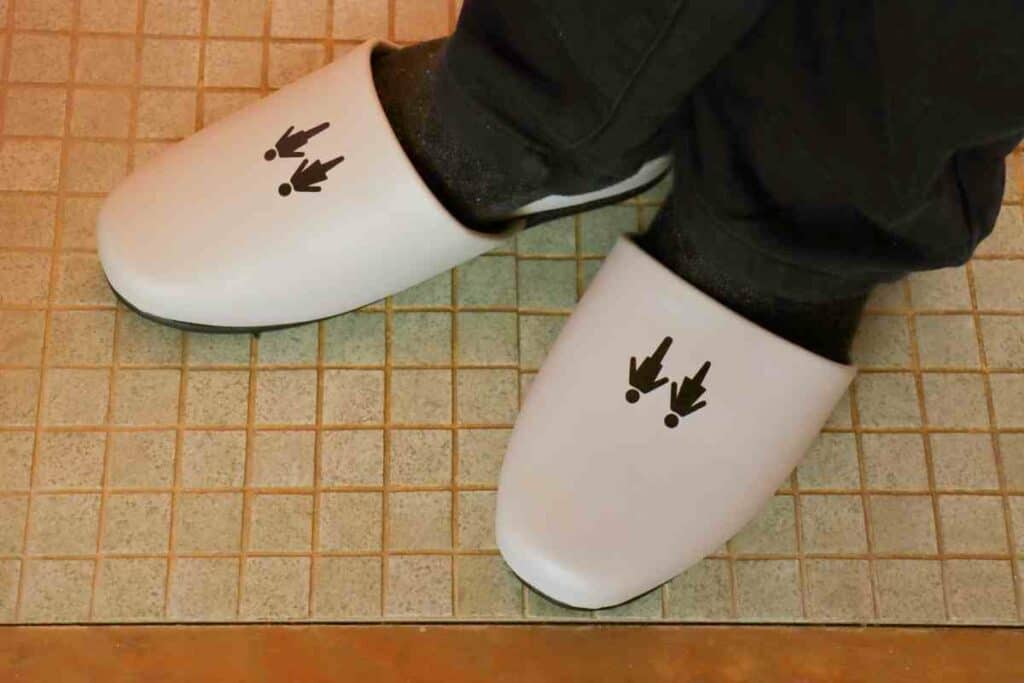
When you visit friends or family, you’ll be offered a pair of slippers at the door.
When you need to use the bathroom, you’ll find another pair to change into.
You mustn’t forget to change back into the other slippers once you’ve finished as that is a complete no-no!
15. Tipping is rude in Japan
Unlike many parts of the world, if you tip in Japan, you’re being rude!
Restaurant, hotel, and entertainment workers will refuse tips.
The only place you’re allowed to tip is if you have your own female clerk or nakai-san responsible for your room.
In this case, you can tip between 1,000 and 3,000 yen.
16. Love hotels
Since it’s common to live with your parents until marriage in Japan, the Japanese has love hotels in abundance.
These hotels are often well equipped with fun items like swings, revolving beds, and adult-toy vending machines.
This is a strange tradition if ever there was one!
When you enter a love hotel, you will see a reception area with a panel of rooms.
You press a room to choose it, pay your money, and receive your key.
The whole time, you’ll never see another person, it’s very discreet.
17. Eating without knowing how much it costs
Lots of higher-end restaurants in Japan don’t show their prices.
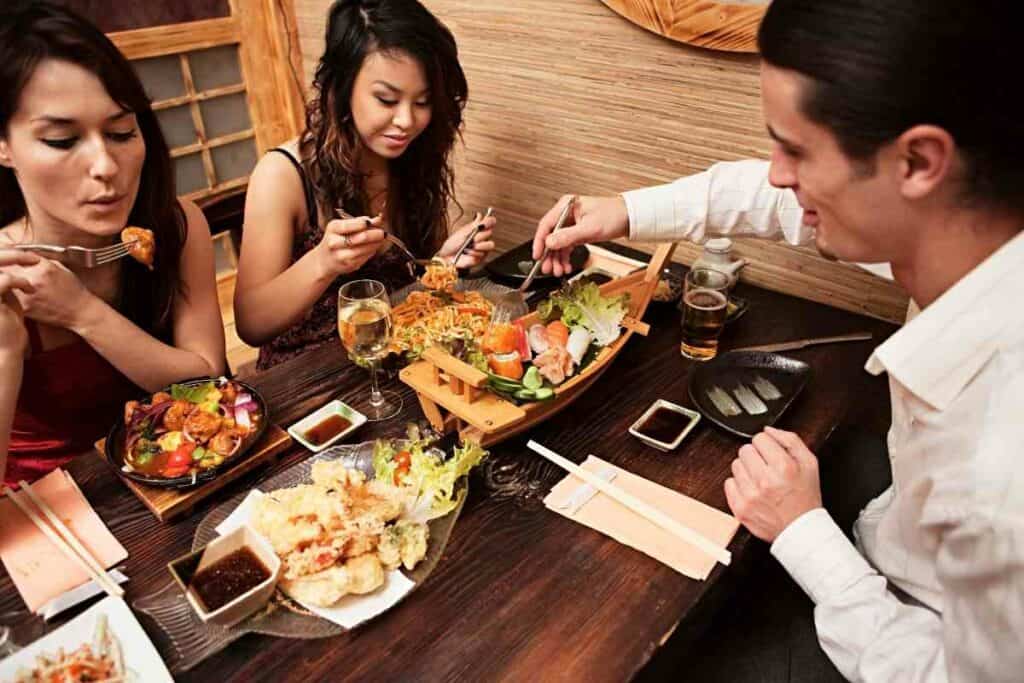
You might see the words ‘seasonal price’ instead.
Of course, it can be scary eating in an establishment like this but it’s a strange tradition to avoid worrying the customers.
If you go into one of these places, it’s possible to ask them to make up your sushi up to a certain number of yen, if you’ve got a budget.
18. Black Teeth (Ohaguro – お歯黒)
Featuring in what is known to be the world’s very first narrative in print, Genji Monogatari: a book from the twelfth century, blackening one’s teeth was a Japanese tradition long before that.
It can be traced as far back as the Kofun perios (c.300-530 AD). Used, mainly, to preserve teeth into the pensioner years, it was also considered to emblematic of both beauty and civilised society on ancient Japan.
Deep black shades and objects of intense black, were also considered to be of high aesthetic value.
Over a thousand years ago, the upper classes of Japan did this ritualistically as a sign of prestige, whilst teenagers did it as a symbol of their coming of age.
Limited only to the elite, throughout the Edo period (1603-1868), it was then banned by the Meiji in the 1870s and has declined ever since.
19. Black Face – A lesson in Context
If nothing more than simply a teachable lesson in the differences across cultures, the act of painting your face black is absolutely acceptable in Japan.
In fact, unlike in an increasingly politically correct western world, where it is considered disgracefully racist to do so, many Japanese girls do it just to give the finger to expectations of beauty.
It is an ancient tradition which has literally nothing to do with race in Japan.
20. Thank Goodness for Google Maps!
Not the oddest tradition we have explored here, but this one is likely to astonish you regardless of that fact.
Lager roads in Japan are labelled like many other countries around the world.
However, when it comes to the smaller streets and roads, avenues and terraces we westerners are accustomed to, they simply do not bother.
What must be a nightmare for the postal service would literally be alien to many cultures around the globe. Don’t forget your satnav if you’re travelling!
21. Vending Machines
Now, you may wonder what vending machines are doing in an article about strange Japanese traditions, but…wait for it.
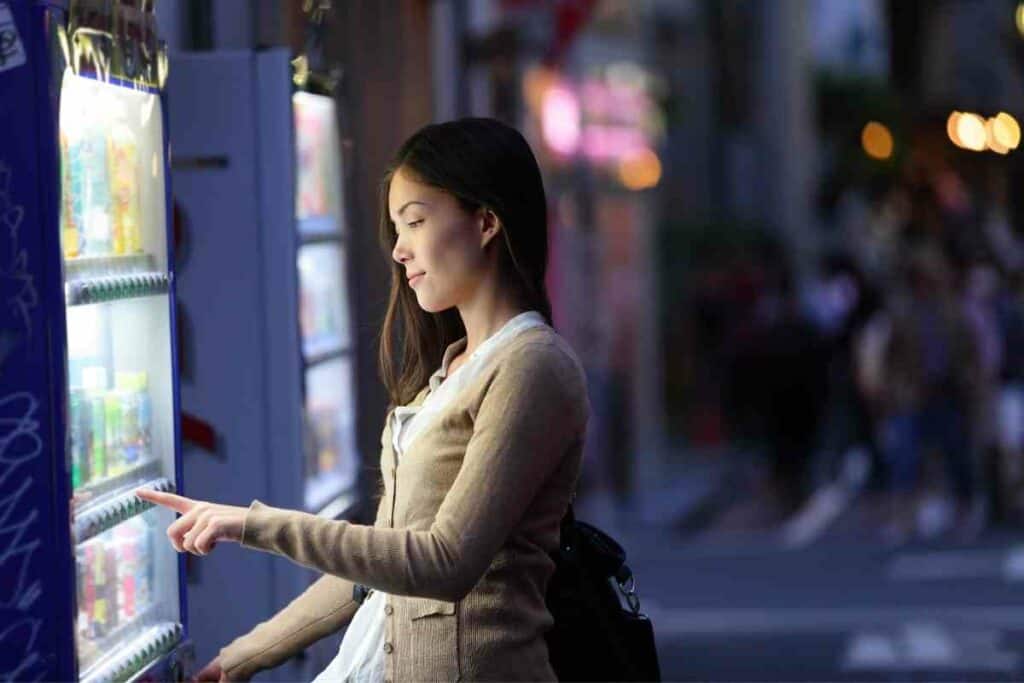
Vending machines are commonplace throughout the world. Japan, however, has the highest density of them that the world has ever seen.
In Fact – With the rate that they are made, they will likely outnumber people in about 50 years. That, however, is not the only weird thing to consider.
In the western world, it is usual to grab yourself a drink or snack from these self-service robots. In Japan, you can purchase anything from a new top to fresh sushi and bottled fish. You can even buy underwear.
22. Bathing in Lunch
It’s no surprise that the archipelago of Japan has an ancient tradition of using Onsen (bathing houses) but there is also an establishment where you can bathe in noodles, green tea, sake, or pork soup.
The health benefits are questionable, but if this is something you find interest in then Hakone’s Yunessun Spa Resort might be the place for you.
23. Bunny Island
From the outright weird to the outrageously cute, Japan has a holiday resort for rabbits.
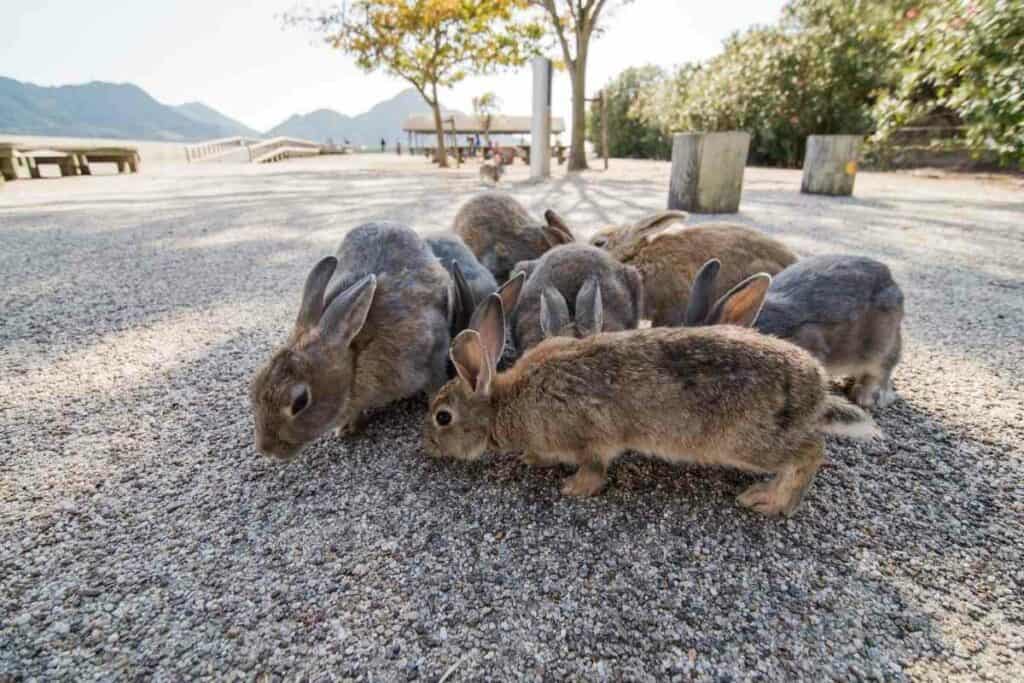
Built, ironically, on what was once a second world war chemical weapons plant, Okunoshima which is now known as Usaga Jima (Rabbit Island) is home to many wild rabbits which will approach visitors.
They run free and will even chase you, so watch out!
24. Curry in a Can
Now, we are all accustomed to seeing a readymade curry in a can on the shelf of a store, but have you ever seen a can of Sea Lion Curry?
Popular in Japan, there is even a restaurant chain called Mr. Kanso in which they only serve food from cans, and there is a vast amount of choice.
25. Ehomaki
Eating sushi has become a worldwide phenomenon.
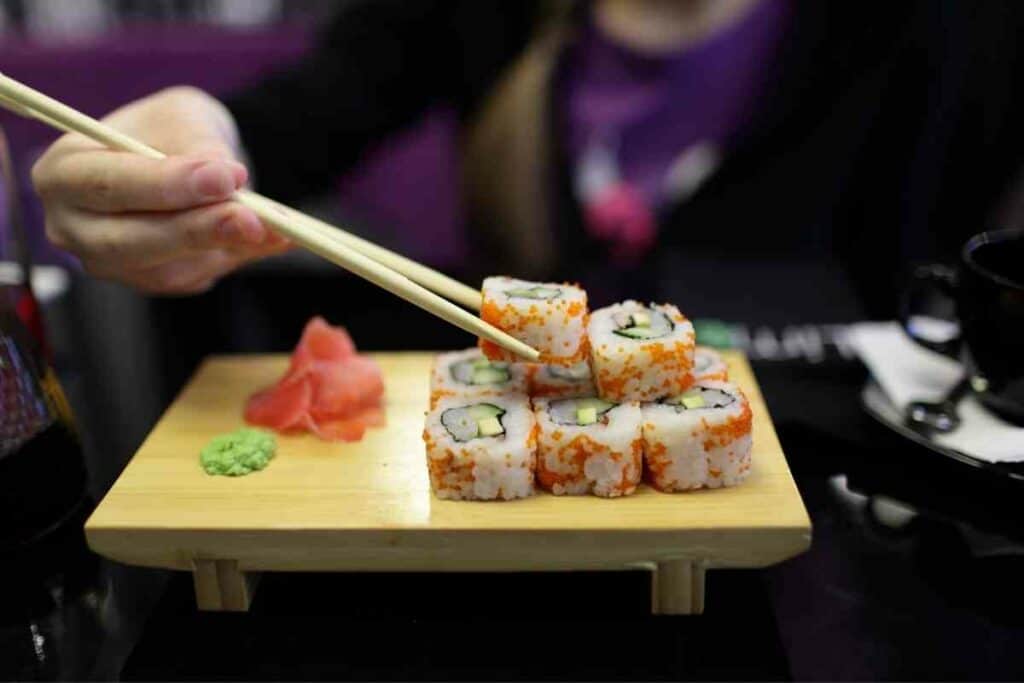
This popular dish is prepared in long rolls which are traditionally sliced into the manageable segments and served in restaurants and vending machines throughout Japan.
There is one tradition, however, in which the sushi roll is consumed uncut and in its entirety, while facing a particular direction for luck, and in complete silence.
The direction apparently changes each year and although it was once a tradition only in the region Osaka, it is now spreading across the country.
Japanese Traditions in Contrast to Western World
The Japanese are considered to be a scrupulous folk, with a culture steeped in both ancient and modern traditions. Some of these traditions, however are not only ancient, but also obscure.
From painting their teeth black as a sign of beauty – completely in contrast to the contemporary ‘pearly white’ western world – to painting their whole face black as a rebellious snort of derision to society’s expectations of beauty, the fascinating cornucopia of Japanese traditions has some quite mindboggling ones to explore.
Final thoughts on strange traditions in Japan
For people looking from the outside, it’s clear to see that Japan is home to many strange traditions – and that’s what makes this such an interesting country and culture.
Inside of Japan, though, these things are just normal.
If you’re planning on visiting Japan, be sure to check out which festivals are happening while you’re there – whether it’s swearing at some priests as they walk uphill, flipping tables angrily, or smelling beautiful women’s farts.
There really is something for everyone!
In Case You Missed It
- 12 Things Tourists Should NEVER Say in Japan
- Kissing Robot: Exploring the Popularity of the Chinese Kissing App
- Unlocking the Secret Dating Rituals Only Locals Know in Japan
- Samurai Armor: Ancient Protection for Japan’s Elite Warriors
- 10 Amazing Facts About Schools in Japan: Unique Traditions and Educational Practices
- Where can you see snow monkeys in Japan: Best locations and viewing tips









